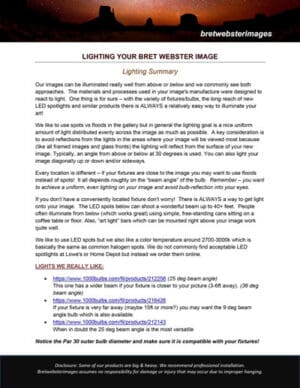If hardwiring an art light isn’t an option…
On Amazon or Google, you can search “Battery Powered Art Light” and you’ll see many great solutions!
If you’d prefer plug-in lights, you can search for those as well. However, you’ll want to make sure the cord length is long enough. (You can always use extension cord). Installation for plug-in lights is relatively simple, but you’ll need to manage the cords in an aesthetically pleasing way.
For example, this plug-in can light:
Keep in mind that you can always illuminate your image from any direction… down is always very nice but up works equally well!
You can search for battery powered OR plug-in simple bar type art lights, can lights, spotlights, rotatable wall sconces etc.
For bar type art lights specifically, you’ll want to choose the right size. Obviously, the bigger the picture, the more light you’ll need to illuminate it. It also depends on whether the artwork is in a portrait or landscape format.
If you have can lights nearby, using a lighting adapter such as this can help illuminate the image:
https://a.co/d/23eBFoL
There are also fixtures that adapt a normal recessed can light into a track light. Just google “recessed can light to track light converter” to get the latest?
We hope this information is useful and that you enjoy your image!
– Bret






 © Bret Webster Images LLC |
© Bret Webster Images LLC | 